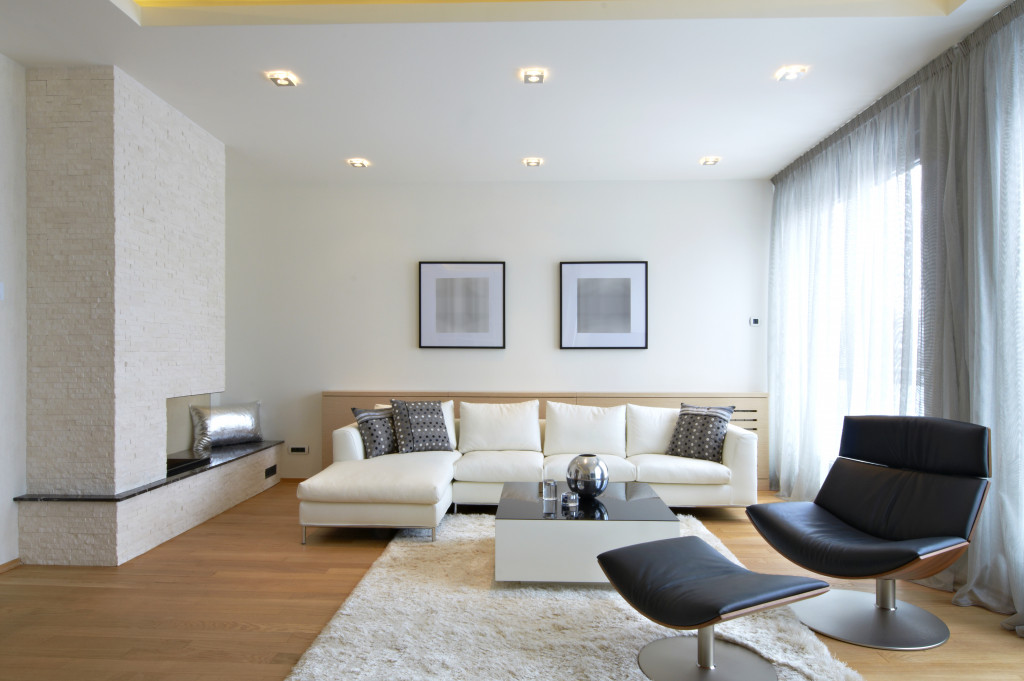Modern homes have already taken into account most of the usual eyesores in a house. They are smartly incorporated into the design — wiring, and pipes embedded in the walls, partitions neatly enclosing utility and storage boxes.
However, there are still homes that were built before these unsightly things were considered a bother. They had simply been seen as necessary blemishes to home aesthetics. If you are renovating an old house, here are a few things you can do to hide these eyesores.
Exposed Pipes
In old homes, there are still these unsightly pipes exposed everywhere in the house. In a way, it serves a purpose — if there are leaks and problems, they can easily be accessed and repaired. There are two things you could do. You could either enclose them in another layer of a wall — which would take up some room space — or paint them creatively to make them part of your decors.
For exterior pipes, you can simply have them buried in the ground. Make sure that your pipes can be easily accessed for sewer line repairs, maintenance checks, and other possible needs. Instead of burying the pipes in soil, you might want to conceal important points with removable covers.
Utility Boxes
In many houses, these are usually behind doors or hidden behind cabinets, so they aren’t very visible to start with. But if you have the misfortune of having it in a prominent part of the house, you can encase this in a mounted closet. Try to make the closet door inconspicuous and have it as wall decor. Maybe instead of using a handle, use a clickable lock and mount a painting that would cover the entire closet door.
Utility boxes outside the house can simply be enclosed in cabinets painted with the colors of the house.
Septic Tank Cover
It’s not the septic tank cover that may look horrible. Rather, the idea of what is associated with it — what is stored in the tank — is what’s unpleasant. This has to be concealed, but in a way that it can still be accessed when you would need to have it dredged.
As it is usually located at the side or back of the house, it should be easy to cover. Some homes use a layer of mulch to cover it before putting big potted plants on top. That’s ok if you don’t dredge your tanks often. If you need access to it more than twice a year, then maybe you’d want a cover that can easily be removed without too much mess. Use a fake lawn that can easily be rolled off.
Trash Bins

Trash bins, even when outside the house, are not only unsightly but could also attract stray or wild animals in places where they are present. The best way to conceal these bins is to place them inside a big slatted box. It is best slatted because if the fumes from the garbage are confined, the smell could get bad. Wood is the preferred material for these boxes because of its flexibility in design while concealing the bins more than boxes made of steel bar would.
Wires
In many places, electric wires outside the houses are already buried in the ground. However, there are still areas where the wires are hung on electric poles. While you can’t do much about these — these are the concern of your electricity distributor — you can do something about the wires around and inside your home.
Wire lines are usually embedded in the walls and flooring. However, some renovators who were going for the cheap options in the past could’ve just added electrical fixtures by having wires run on the surface of the wall. If you don’t want to embed this in your wall — you will need to have the entire wall smoothed again and repainted so that the part where your wires were embedded won’t stick out — you can cover it with molding. There are different molding designs you could choose from that would fit the look you are aiming for in your home.
The other wires in your home that need attention are the electric cords of your appliances. Your workspace would probably have at least three cords snaking from your outlets. Have a charging station — it could be your desk so you could charge your laptop while using it — so that you can gather the wires together. Put them inside a plastic tube — pay attention to the color as it will need to blend in with your room’s theme — and secure the tube on your wall. Only the end sections of the wires should be outside the tube.
These eyesores are unavoidable as they are integral parts of your home. They wouldn’t be a bother if you just know how to fuse them into your house. You don’t need to do a costly renovation. Just be creative and use whatever is available to you.




